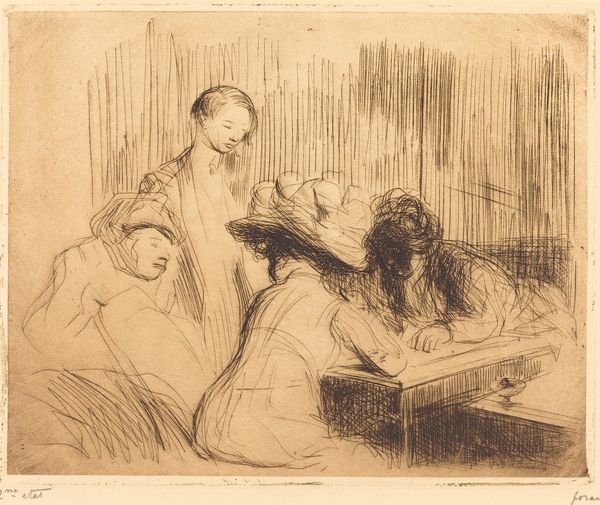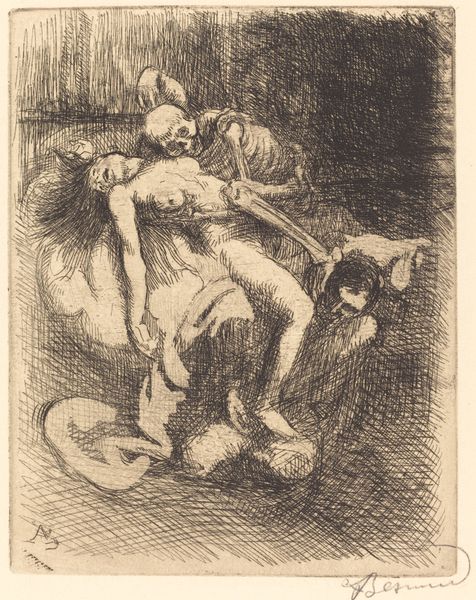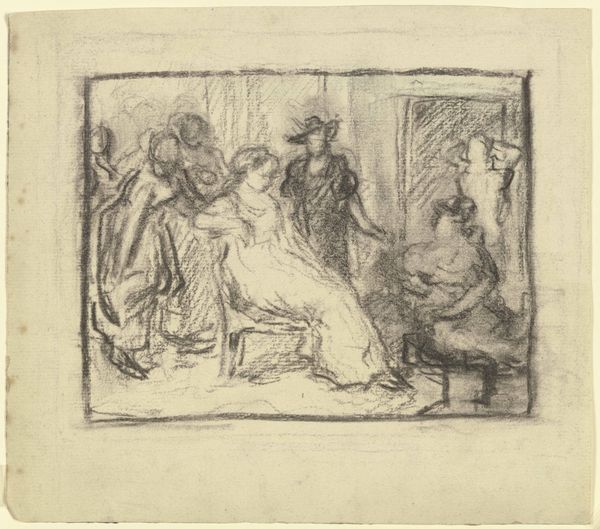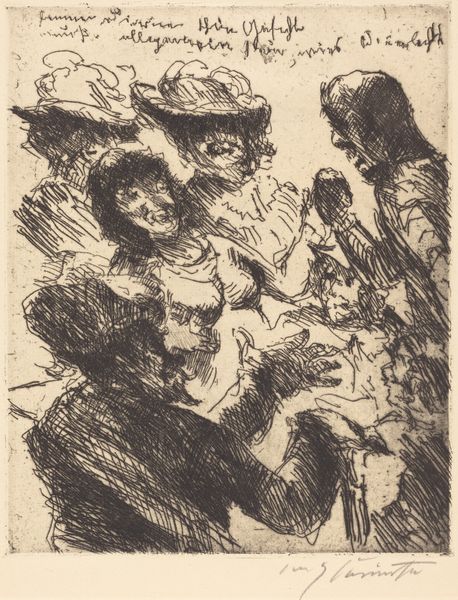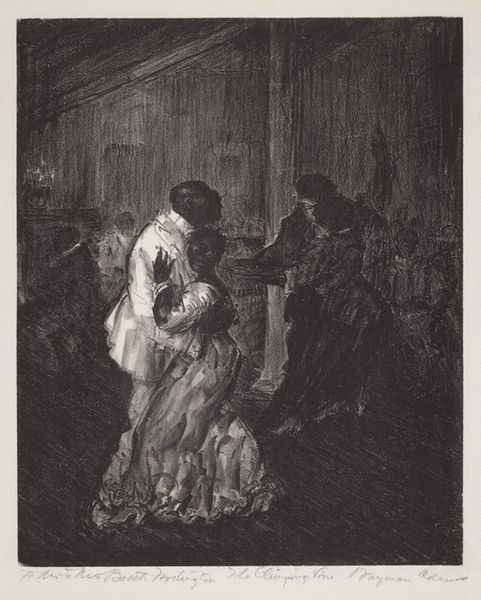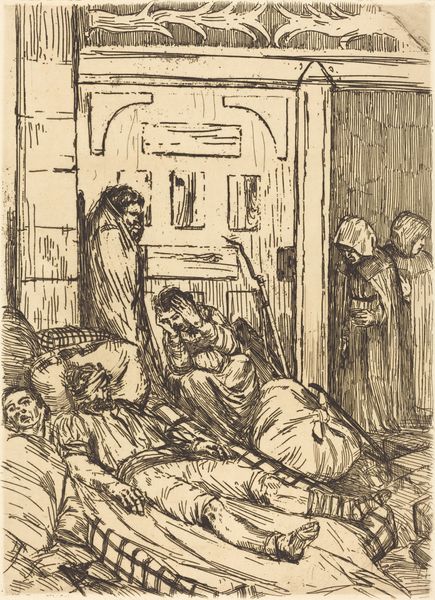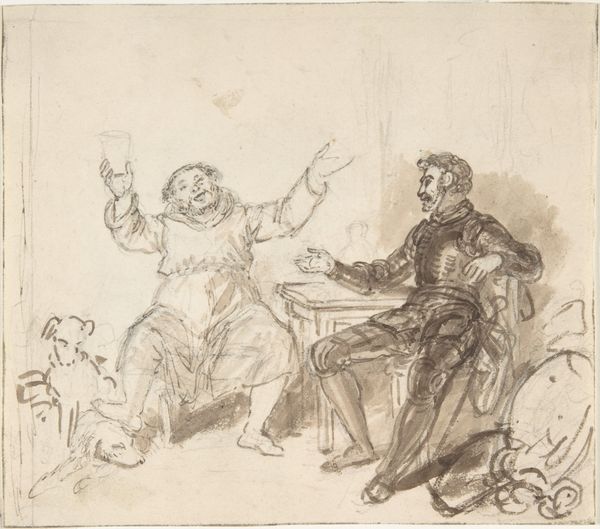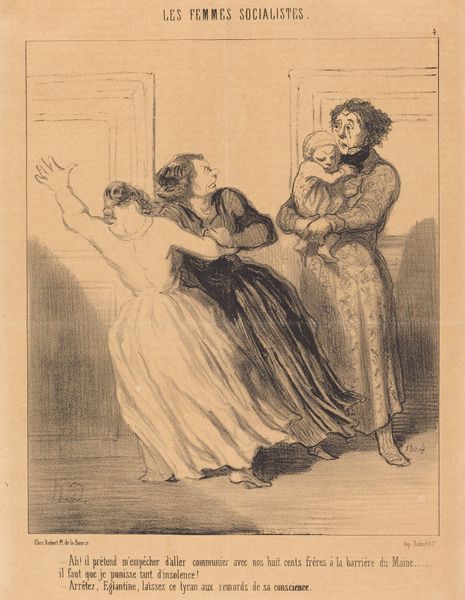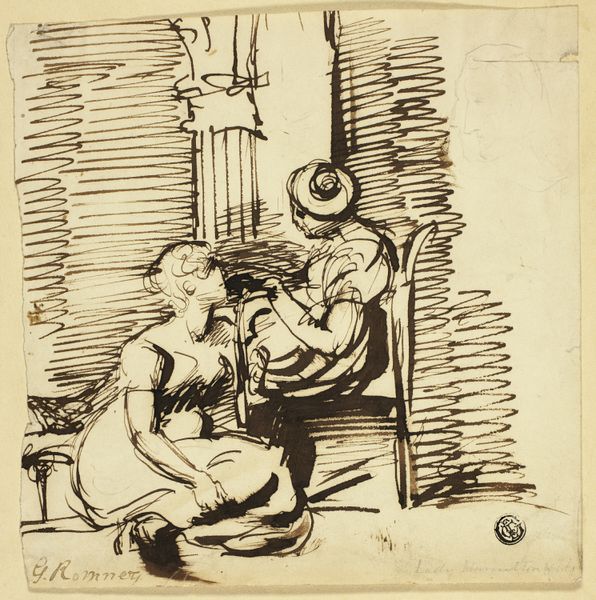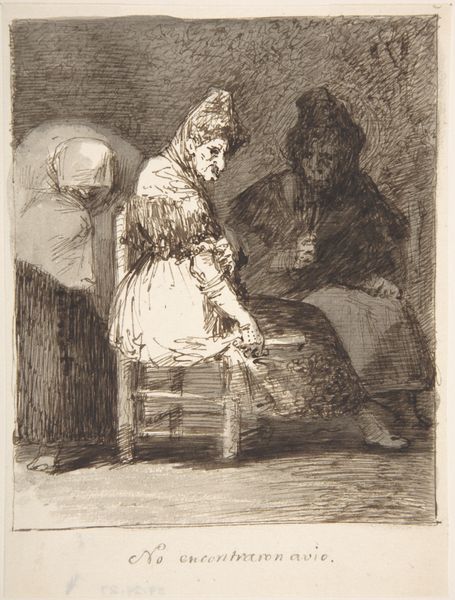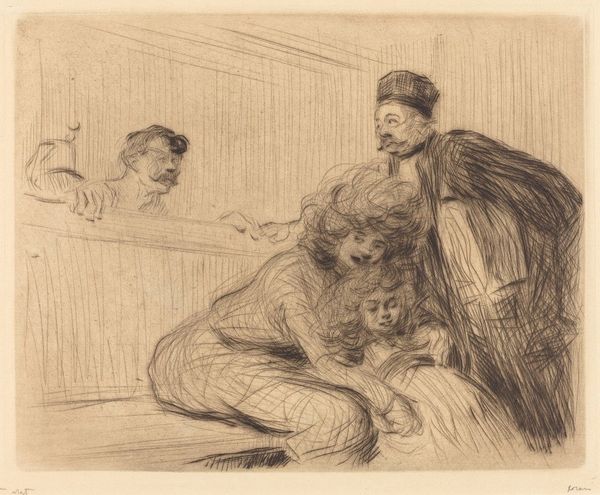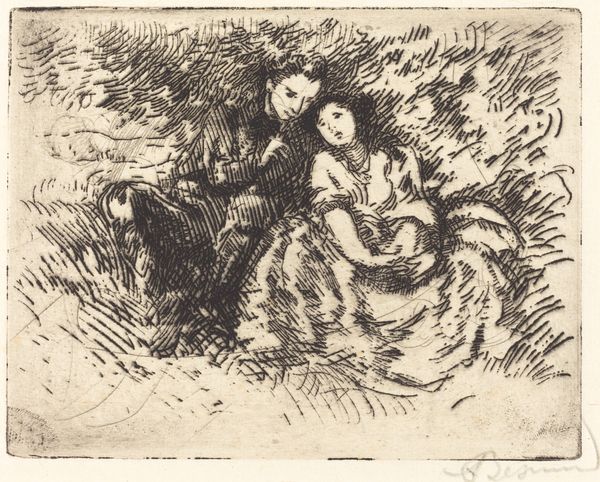
drawing, paper, ink, graphite, pen
#
drawing
#
ink drawing
#
impressionism
#
figuration
#
paper
#
ink
#
ink drawing experimentation
#
graphite
#
pen
#
genre-painting
Dimensions: 100 × 100 mm
Copyright: Public Domain
Curator: This ink drawing by Constantin Guys, titled "After the Ballet," captures a fleeting moment backstage. It's currently part of the Art Institute of Chicago's collection. What strikes you about it? Editor: The immediate sense is of frantic energy and transience. The rapid strokes, the somewhat smudged ink – it conveys a feeling of backstage bustle rather well. There’s something almost Degas-like, but more raw. Curator: Absolutely. Consider Guys' technique – the swift pen strokes and graphite underdrawing. It’s very much about capturing a sense of immediacy, documenting modern life as he saw it. The use of layered ink washes also indicates experimentation. It challenges established art boundaries by showcasing an informal scene. Editor: And that informality feels deliberate, doesn't it? He’s showing us not just the dancers, but the support structure around them. Look at the woman on the floor, perhaps mending a costume – it reminds us of the labor behind the spectacle, and how the stage glamor relies on that type of activity. The class system and support surrounding performance are really what makes an audience react as a singular whole, as well as to perceive ballet a certain way. Curator: Precisely. Guys was, after all, a keen observer of social dynamics. The ballet in his time represented more than mere entertainment; it was entwined with the spectacle of wealth, class, and cultural expectation. His role as an illustrator played a crucial role here. The accessibility of this work to a broader audience, thanks to print culture, reveals a certain democratizing impulse behind image consumption. Editor: I find it interesting how the work skirts sentimentality. The composition, the rough strokes, almost resists romanticizing ballet or its performers. Instead, it captures a specific social moment—the transient reality of the performers as they navigate these institutions of high culture. There is even a sort of caricature present here of an elegant older male character standing on the left. Curator: And note how that sense of captured social energy speaks to its endurance in the collection. Its material qualities, too—the humble pen, ink, and paper—belie the profound social narratives that such scenes convey. The act of making in itself then is both simple and profound, as social illustration of all kinds often has the effect of commenting on complex socio-economic themes. Editor: It does leave one contemplating the unseen work—the physicality and support that contribute to those brief moments of theatrical display that elite art goers are exposed to—often fleeting in their beauty. Thanks to this depiction and distribution through drawings in a relatively reproducible material format, the labor around these productions can also be briefly enjoyed and understood. Curator: A really wonderful point. Thank you for your insights!
Comments
No comments
Be the first to comment and join the conversation on the ultimate creative platform.

